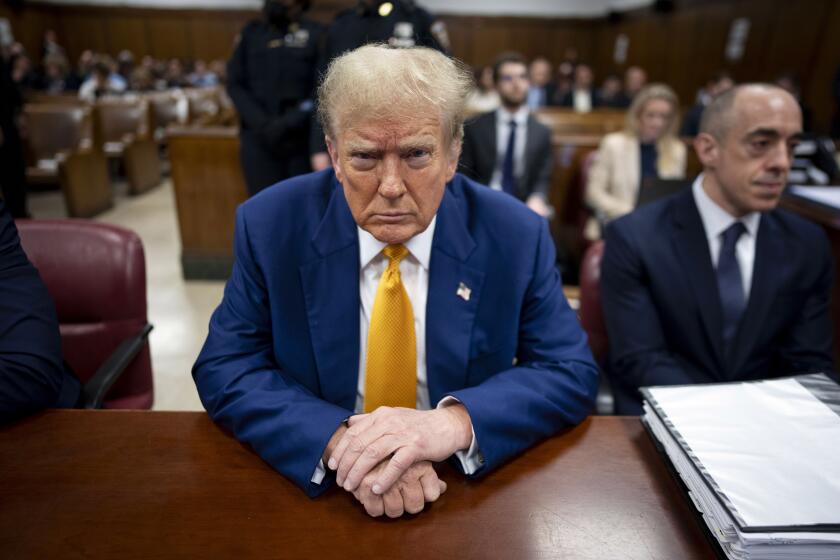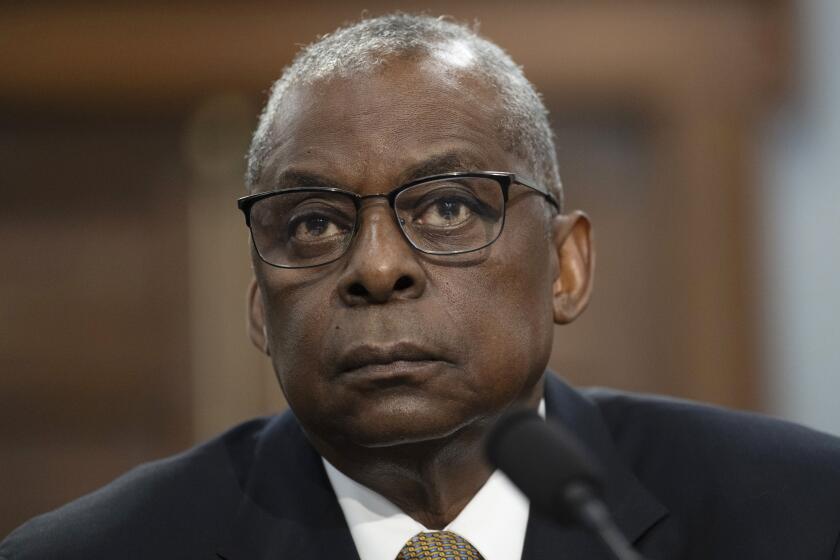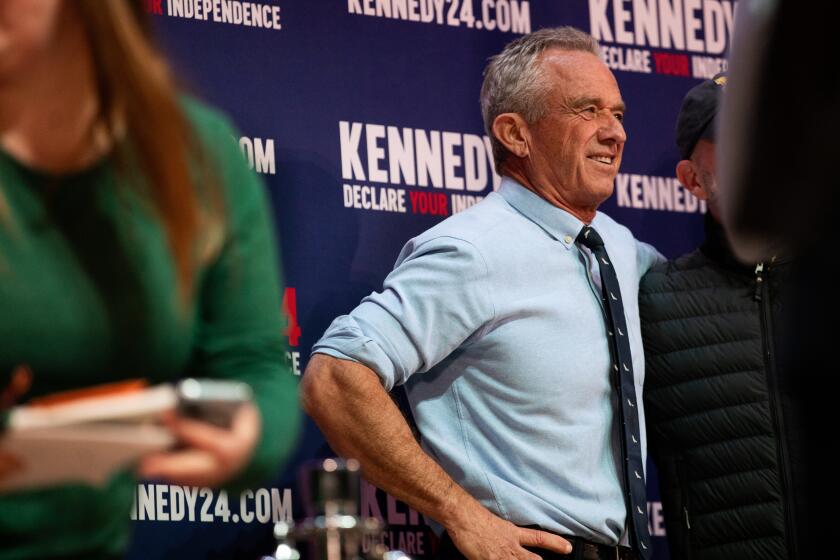NEWS ANALYSIS : B-2 Making Comeback Bid but Congress May Choke on Cost
The B-2 Stealth bomber program was headed for a premature death only a year ago, but the prospects for its survival have improved dramatically in recent months.
The odds that Northrop Grumman could sell the Pentagon more B-2 bombers appeared virtually nil when the firm began a concerted sales campaign in 1994, but the proposal now seems to have a realistic--though far from certain--shot of gaining congressional approval.
The Los Angeles aircraft maker wants the Air Force to buy 20 more bombers for roughly $15 billion, a huge sum that even the program’s proponents acknowledge will cause Congress to choke.
Nonetheless, a political consensus is forming that the U.S. military, particularly its fleet of heavy bombers, is stretched too thin and the Air Force’s ability to handle major conflicts around the world is in doubt.
As a result, signs of support are beginning to appear for a plan to upgrade the bomber forces and--in the process--preserve roughly 30,000 jobs in California supported by the B-2, according to senior Air Force officials, Northrop executives and key members of Congress.
“I would like to have more,” said Rep. Duncan Hunter (R-El Cajon), chairman of the House National Security Committee’s procurement subcommittee. “I have always been a supporter of bombers.”
At a subcommittee hearing Thursday on the B-2, Gen. Mike Loh, the Air Force’s combat chief, said he was “concerned that we may not have enough bombers.” Instead, the service has been pushed into a “risky and untried” strategy that could spread its forces thin. The committee was clearly sympathetic to that message.
The decision on the future of the B-2 will have enormous impact on the Southern California economy, which still depends heavily on defense. Along with the McDonnell Douglas C-17 cargo jet, the B-2 is a mainstay of the West Coast military aircraft industry.
The prelude to the congressional battle will come over the next several weeks, as independent studies commissioned by the Pentagon to examine the bomber issue are completed. Hunter expects those studies to be somewhat equivocal, giving Congress the opportunity to “exercise its independent judgment.”
In a brief interview after the hearing, Loh confirmed that the prospect of getting more B-2s has improved. And seven former secretaries of defense have endorsed the plan to buy more B-2s, saying it is vital to national security.
Meanwhile, Northrop has spared little effort or expense to preserve its trademark product from demise once the last aircraft rolls off the Palmdale assembly line, now scheduled for 1998.
The Pentagon originally planned to buy 132 B-2s during the Cold War, but cut the number to 75 after the Berlin Wall fell. The number of planes was subsequently pared to 20 for budgetary reasons.
At the hearing, Loh pointed out that the decision to buy only 20 planes was not based on what was militarily prudent, but rather was only the minimum necessary to maintain an operational force.
Northrop’s approach in selling the B-2 has been to hire former defense officials and defense experts who could vouch for the bomber on its merits. The Northrop message is that this is a program that is working well, meeting its budget, performance requirements and schedule.
After six years of flight operations, not a single bomber has crashed, perhaps a first for a new combat jet. “We really have some very strong support,” said Northrop’s B-2 chief Ralph Crosby. “As long as these studies give us something to work with, we will be successful.”
Air Force officials have sent mixed messages about their support for the B-2 over the past year, apparently reflecting marching orders sent from senior Defense Department officials who have officially stated they don’t need any more bombers.
No sooner than retiring, however, former Air Force Chief of Staff Merrill McPeak began privately expressing support for the B-2.
Loh testified Thursday that the Air Force has just 100 bombers capable of combat, a force that U.S. policy dictates is supposed to be capable of fighting two major regional wars at roughly the same time. Loh said he isn’t sure 100 bombers will do the job, because it will require swinging forces from one theater to another.
“The strategy of swinging bombers from one conflict to another is risky,” Loh said. “It is an untried, untested strategy.”
The $15-billion cost figure is just one of 12 different cost estimates made by Loh Thursday, depending on various inflation assumptions and production rates for the 20 additional aircraft. Committee members said they were confused by the jumble of data and said it was destined to be a contentious issue on the House floor.
Rep. Jane Harman (D-Rolling Hills) told Loh that she supports the B-2 but that the costs are too high and must be hammered down to a level that the entire House can accept.
But Rep. Ronald V. Dellums (D-Oakland), the leading foe of the B-2, said the only relevant cost is the highest number offered by Loh--$31 billion, which includes the planes and operating costs over the next 20 years--because ultimately that is what taxpayers will bear.
“Where the hell you are going to find that you need more than 20 B-2s is beyond me,” Dellums said.
The angry comment reflects the tough fight that the B-2 will face over the next 60 days. Even if money is found to buy the planes, competing defense firms will fight to take it away so that their programs can be funded.
But the mere fact that the hearing was held is evidence that Northrop has successfully put the B-2 back on the agenda, which was no small accomplishment in itself, said one veteran congressional official.
“We are almost there,” said Rep. Norm Dicks (D-Wash.), a B-2 supporter who has tried to engineer a deal that would fund the B-2 and the purchase of Boeing jetliners by taking money from the C-17. “I can almost guarantee you we will appropriate the money.”
More to Read
Start your day right
Sign up for Essential California for news, features and recommendations from the L.A. Times and beyond in your inbox six days a week.
You may occasionally receive promotional content from the Los Angeles Times.







